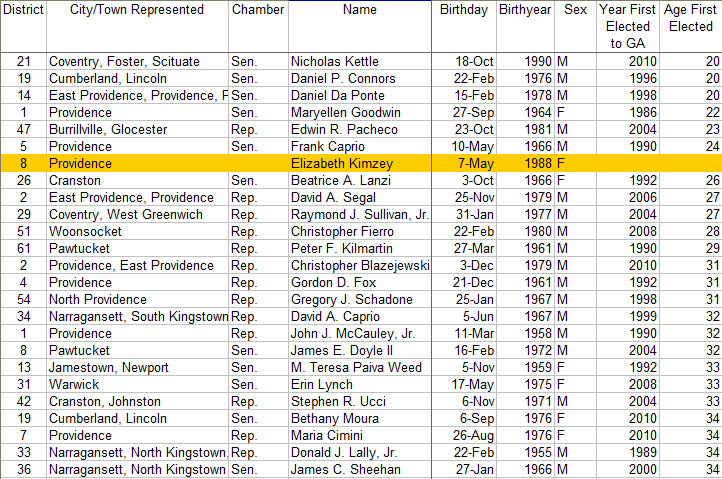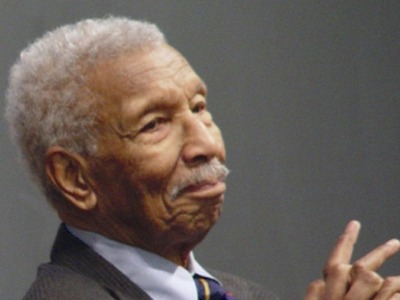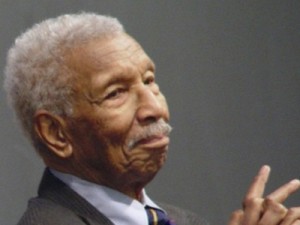
1934 was a tumultuous year for the Labor Movement in the United States, as the country continued to struggle its way out of the Great Depression. The Labor battles that raged in 1934 were preceded a year earlier with a sense of hope and promise for workers struggling for the necessities of survival against brutal oppressive employers. Following the Depression in the first year of Franklin Roosevelt’s presidency, a series of economic programs were implemented to aid in the recovery of our country. In June of 1933, Congress passed the “National Industrial Recovery Act”, which was the first actual Bill to guarantee and protect Collective Bargaining rights for workers in the United States.
Immediately, large scale organizing campaigns began in earnest up and down the industrialized east coast and other industrialized centers in the country. Yet, enforcement of the Act by those very individuals charged with its administration was woefully inept and met with stiff resistance from business leaders. Frustrated Union organizers fought with little success for the Collective Bargaining promised by the NIRA.
Once again, the stark reality became clear to the workers and the unions.
Once again, the government’s empty promises were not kept.
Once again, workers would be forced to win Democracy in their work placed – the hard way.
THE BATTLES LINES WERE DRAWN
In 1933 and 1934 workers organized across the length and breathe our Country. Fed up with speed-ups, oppressive, unsafe working conditions, child labor and company control of too many aspect of their lives. In those truly epic years workers in the United States fought for dignity and respect in their workplace by using the only weapon they had in their arsenal. In 1934 workers hit the bricks and held fifteen major strikes. Most notably were four strikes which labor historians agree were the most important strikes in the United States history.
- The “Toledo Auto Lite Strike” in 1934, which pitted 6,000 automotive workers in a five day running battle with 1300 armed members of the Ohio National Guard. Known as the “Battle of Toledo” the clash left two strikers dead and over 200 wounded, the victory led to wide spread unionization in Toledo and was the beginning of the United Auto Workers rise to prominence in organizing the automobile manufacturing industry.
- The Minneapolis Teamsters Strike in 1934 which changed the city of Minneapolis. The strike paved the way for mass organization of the over-the-road drivers throughout the Midwest and opened the doors of union membership to thousands of Minneapolis workers in other industries.
- The 1934 West Coast Longshoreman’s Strike lasted 83 days; triggered by sailors and culminating in a four-day general strike in San Francisco which crippled the local economy and broke the back of the open-shop company unions and led to the unionization of all of the West coast ports of the United States.
- The fourth and largest strike was the 1934 General Textile Strike which was the largest strike in United States History; involving over 400,000 textile workers from Alabama to Maine. The strike began over fair wages and working condition in an industry awash with unfairness, abuse, child labor, dangerous working conditions, and minimal pay.
In September of 1934 in Rhode Island, the Great Textile Strike engulfed the primary industry in the Ocean State and required the calling out of the National Guard for riot duty. By the second week of the strike, tensions between workers and owners erupted into open conflict centered in Saylesville, now Central Falls, where we stand today and in Woonsocket. On September 10th, the continued misuse of force by deputy sheriffs, closely allied with the owners of the huge Sayles Textile Complex, provoked large scale rioting in and around the Sayles Bleachery and streaming out along Lonsdale Avenue and into this very cemetery where workers fled from guards and sheriffs armed with rifles and machine guns. The workers used the headstones to block themselves from the incessant volley of bullets trained on them.
Gravestones tell the story of those who rest below them. And in this cemetery some of the gravestones tell another story. Some of them carry the scars of machine gun bullets, as did so many of the workers who were wounded in that massacre and two who would not leave the cemetery alive.
The ultimate sacrifices born by workers in the strikes of 1934 and perpetuated upon them by guardsman, vigilantes and company thugs are unparalled in labor history even to this day.
Those workers earned and deserve our respect and recognition for paying the ultimate price of martyrdom so that others might be free from worker exploitation.
In 1934, thirty-three workers became martyrs in the Labor Movement:
In Florida – Frank Norman, an organizer kidnapped & murdered.
In George – textile workers Leon Carroll, Reuben Saunders and
V. Blalock were shot and killed.
In Texas – Charles Shapiro murdered on a picket line.
In Alabama – coal miners Edward Woolens, H.C. Collins and Ed Higgins were killed.
In Louisiana – longshoreman Murphy Humphrey murdered by sheriff’s deputy.
In Kentucky – miner Pezzy Adkins – ambushed and murdered by vigilante.
In South Carolina – textile workers John Blackborough, Lee Crawford, E.M. Knight, Ira Davis, Claude Cannon, C.L. Ricker and Maxie Peterson – ALL murdered by guards at the Chiguola Mills
In North Carolina – Ernest Riley killed on a picket line.
In Chicago – bakery worker Joseph Piskondwicz killed on a picket line.
In Wisconsin – Leo Wakefield and Henry Engleman were shot down by deputy sheriffs.
In Minnesota – teamsters Henry Ness and John Belor were killed by police.
In Washington – Shelby Daffron and Otto Heland, both longshoremen, lost their lives
In California – Longshoremen Howard Sperry, Nick Bordois, Richard Parker and John Knudsen killed during the Longshoremen Strike.
And in September 1934, textile workers in Woonsocket, Rhode Island, Jude Courtemanche & Leo Rovette fell from tyranny’s bullets as did Charles Gorzynski and William Black on this very hallowed ground in Central Falls where we stand on this Labor Day 2011.
My brothers and sisters, since we stood here on Labor Day one year ago to commemorate the Rhode Island martyrs of the Great Textile Strike of 1934 by erecting this memorial on this spot in the Moshassuck Cemetery to the martyrs of the Saylesville Massacre the renewed attack on the Labor Movement here in Rhode Island and nationally, strongly mirrors the oppressive treatment of workers so long ago.
Nationally, the Supreme Court, in a 5 to 4 decision in the case of Citizens United v. Federal Election Commission, made it possible to allow unlimited amounts of corporate money into the United States political system. This played a heavy hand in the election of new anti-worker elected officials and the attacks that followed. – and this madness is what followed in 2011:
Since the November 2010 election, the Big Business/Anti-worker agenda across the United States has introduced Right to Work legislation in fifteen states.
In several states, legislators have attempted to eliminate automatic dues deductions.
In Minnesota – legislators have attempted to take away whistle blower protections for meat packing workers, and over-time pay away from construction workers.
In Maine – Republican Governor Paul LePage removed a mural honoring workers and Maine’s’ labor history from the state’s Department of Labor Building. He followed that with a Right to Work Law.
Republicans in New Hampshire pushed Right to Work.
In Missouri, in what can only be described as a Tea Party “side- show”, – Republican legislators tried to roll back child labor laws.
In Oklahoma – the Republican controlled legislature passed a law that requires a parent’s consent for teenagers working in a grocery store to be part of the Union.
Republican legislators in Tennessee want to make union rallies and picket lines a crime!
In Pennsylvania – the Republican Governor wants to privatize the state-run liquor stores, jeopardizing more than 500 million in revenue and threatening the wages & benefits of Union members who work in those stores.
In Ohio, the first state to legalize public sector collective bargaining – the Republican super-majority meant that the legislature passed and Governor Kasich signed into Law SB-5 – stripping Ohio’s public employees of the right to bargain collectively with their employers.
And in Wisconsin – the legislature passed and Governor Walker signed a budget that denies teachers, fire fighters and state workers the fundamental right to bargain collectively.
RHODE ISLAND SINCE LAST LABOR DAY
The Westin Hotel in Providence where workers are represented by UNITE/HERE Local 217, attempted to impose a 20% pay reduction, an increase in health insurance costs, and an outsourcing of the jobs of many union workers.
In Providence, the labor movement was once again under attack and used as a scapegoat for the economic woes of the states and municipalities when the School Boards voted to fire all 1,926 teachers on February 4th.
After months of bargaining in good faith, Laborer’s Local 1322, Cranston Bus Drivers were faced with a bleak future when the city council recommended the privatization of the town’s school bus service.
At Amica Insurance in Lincoln, the company eliminated the jobs of 55 maintenance workers by privatizing their department to a contractor with a history of NLRB violations.
IBEW members at Local 2323 were forced out on strike when Verizon officials attempted to take back 50 years of contract negotiations by eliminating job security, slashing pays and benefits, and sending jobs overseas.
And RIGHT HERE in Central Falls, the site of the riots of 1934, the Rhode Island Department of Education waged war on the public school teachers halfway into a three-year contract. On February 23rd, the Central Falls Board of Trustees voted to issue termination notices to all Central Falls High School teachers. The Board read each name in a crowded auditorium.
Like the textile strike 77 years ago, the labor strife in Central Falls was once again national news.
AND WHAT DID LABOR DO?
We fought back as we always do.
We stopped the right wing’s agenda to legislate Right to Work Laws in all fifteen attempts this year.
We stopped them from repealing the Minnesota Whistle Blower Act of 1987.
Governor Guy LePage of Maine lost his bid to turn Maine into a Right to Work State.
In New Hampshire, Governor Lynch vetoed the Tea Party’s Right to Work Law the moment it hit his desk.
In Missouri, the anti-union state Senate would not have its way. We soundly defeated their attempts to eliminate child-labor laws.
Pennsylvania will not be privatizing their liquors stores thanks to an extensive lobbying and education campaign by organized labor.
In Ohio, Governor Kasich’s approval numbers are in the 30’s and his anti-union Collective Bargaining Bill will be on the November 8ballot where the latest poll number show 56 – 32 to repeal.
In Wisconsin, Governor Walker’s numbers are worse than Governor Kasich’s’ after stripping public unions of collective bargaining rights. And two safe Republican Senators lost their recall election and were replaced by pro-worker candidates.
AND WE FOUGHT BACK IN RHODE ISLAND TOO!
THE STATE HOUSE MASSACRE OF 2010
In November the members of Rhode Island unions sent a message to the State House… “If you’re going to run as a Democrat, than you damn well better VOTE like one!” The members proved it by working hard to defeat six incumbent democrats hostile to working families and replaced them with worker friendly democrats.
Westin workers, members of UNITE/HERE Local 217, ratified an agreement after a successful boycott with significant gains to their contract and no privatization of union members’ jobs.
The Providence Teachers Union reached a new three-year Agreement; with all termination notices rescinded.
After intense pressure from organized labor and the general public, the Cranston School Committee decided to end their fool-hardy quest to privatize the ninety bus drivers, members of Laborer’s Union, Local 1322.
IBEW, Local 2323 workers are back to work after being forced out by Verizon three weeks ago after the Company agreed to streamline negotiations and bargain in good faith.
And last week, the Rhode Island Board of Regents voted 7 to 1 to reject charter schools in Cranston.
They can knock us down, but they can’t lick us – this IS Labor Day – in the state which held the first Labor Day Parade in the United States.
And every working man and woman in this state owes a great debt of gratitude to those who were knocked down and got up before and to all of us who continue to fight back today. We ARE the Labor Movement!
And we say to ALL of you workers – whether you are union or not –
YOU’RE WELCOME!
You’re welcome for: Eight-hour day
You’re welcome for: Forty-hour workweek
You’re welcome for: Child labor laws
You’re welcome for: Health insurance & Pension benefits
You’re welcome for: Paid vacations & paid sick days
And you’re welcome for this Labor Day Weekend and every other weekend of the year – because…..
WE ARE THE UNION AND DAMN PROUD OF IT!
 A friend of mine just had a tragedy in the family—his grandmother passed away. It has been difficult for him, but the good news is that his grandmother lived a rich, full, and happy life and died surrounded by a large and loving family.
A friend of mine just had a tragedy in the family—his grandmother passed away. It has been difficult for him, but the good news is that his grandmother lived a rich, full, and happy life and died surrounded by a large and loving family.







 As it turns out, Monty Python was right: Finland isn’t just a
As it turns out, Monty Python was right: Finland isn’t just a  Recently, Humanist and philosopher John Shook said it very simply, and I have to agree with him: Humanism cannot support the death penalty. His full article is linked and I would suggest that everybody with an interest in justice read it, but one part bears repeating here: Humanism stands for valuing the lives of all, individual human rights, justice for everyone, and governments that defend all of their people. These grounds alone are sufficient for abolishing the death penalty.
Recently, Humanist and philosopher John Shook said it very simply, and I have to agree with him: Humanism cannot support the death penalty. His full article is linked and I would suggest that everybody with an interest in justice read it, but one part bears repeating here: Humanism stands for valuing the lives of all, individual human rights, justice for everyone, and governments that defend all of their people. These grounds alone are sufficient for abolishing the death penalty. All citizens have a right to have their voices heard, and I, like the Occupy movement, am concerned about the causes and impacts of the most serious economic downturn in decades. This movement is important because our city, our state, our nation need to do much more to address the jobs and foreclosure crises which are crushing hope and opportunity for the 99% of us.
All citizens have a right to have their voices heard, and I, like the Occupy movement, am concerned about the causes and impacts of the most serious economic downturn in decades. This movement is important because our city, our state, our nation need to do much more to address the jobs and foreclosure crises which are crushing hope and opportunity for the 99% of us.
 Date: Saturday, October 15th
Date: Saturday, October 15th